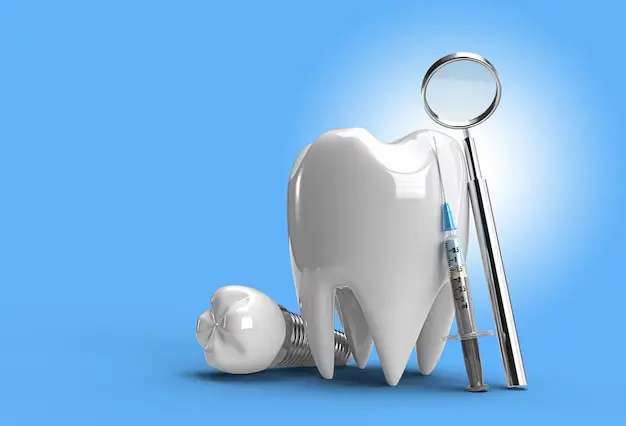Losing one or more teeth can result in bone loss, which can be a significant concern. The reason behind this is that the tooth root plays a crucial role in stimulating and maintaining the surrounding bone, keeping it strong and healthy. However, when a tooth is missing, this vital stimulation is lost, leading to bone resorption or shrinkage in the affected area. This process can continue over time and result in a decrease in bone volume and density, causing challenges when it comes to placing dental implants.
Dental implants refer to synthetic tooth roots utilized to support replacement teeth. They are generally crafted from biocompatible materials such as titanium and inserted into the jawbone surgically. After implantation, the surrounding bone will gradually bond and fuse with the implant surface through a process called osseointegration.
Insufficient bone in the area may hinder the proper integration of the implant and lead to its failure. In such instances, bone grafting might be necessary to augment the bone in the affected region before implantation can take place.
In addition, individuals with dental implants may face ongoing bone loss, which can be problematic. This is because the implants are unable to offer the same degree of stimulation to the surrounding bone as natural teeth do. Consequently, the bone in that region may continue to shrink gradually over time, leading to a condition called peri-implantitis. This condition is characterized by inflammation and loss of bone around the implant.
To prevent bone loss and maintain the health of dental implants, it is important to practice good oral hygiene, including regular brushing and flossing, and to schedule regular check-ups with a dental professional. In some cases, additional treatments such as bone grafting or implant revision may be necessary to address bone loss and ensure the long-term success of dental implant treatment.
Dental implants have become a popular solution for people who are missing one or more teeth. They are a long-lasting and natural-looking alternative to bridges, dentures, and other traditional dental prosthetics.
Following are the benefits of dental implants and why they may be the right choice for you:
Enhanced Functionality
Dental implants are designed to function just like your natural teeth. They allow you to chew and speak with ease, without worrying about slippage or discomfort. Unlike traditional bridges, implants don’t rely on adjacent teeth for support, so there’s no risk of damaging healthy teeth.
Long-Lasting and Durable
Dental implants are made from durable materials like titanium and zirconia, which can withstand the pressures of daily use. With proper care, they can last a lifetime. Traditional dental prosthetics like dentures and bridges typically need to be replaced every 5-10 years.
Improved Oral Health
Dental implants don’t just improve the appearance and functionality of your smile – they can also improve your oral health. When a tooth is missing, the surrounding bone tissue can start to deteriorate. Implants stimulate the bone tissue, preventing further loss and promoting healthy bone growth.
Convenience and Comfort
Unlike dentures, dental implants are a permanent solution that doesn’t require daily removal or special cleaning. They are comfortable to wear and won’t interfere with your speech or eating habits.
At North Queen Dental in Etobicoke, we understand that the decision to undergo dental implant treatment can be scary, and we are here to help you every step of the way. If you’re looking forward to getting Dental Implants Treatment in Etobicoke, it’s crucial to seek out an experienced and reliable dentist who can assist you throughout the process. At North Queen Dental in Etobicoke, our team of dental professionals is enthusiastic about earning your trust and delivering successful outcomes with a patient-friendly dental procedure experience. So, contact us to schedule an appointment to explore the benefits of dental implants and take the necessary step toward achieving standard oral health.

